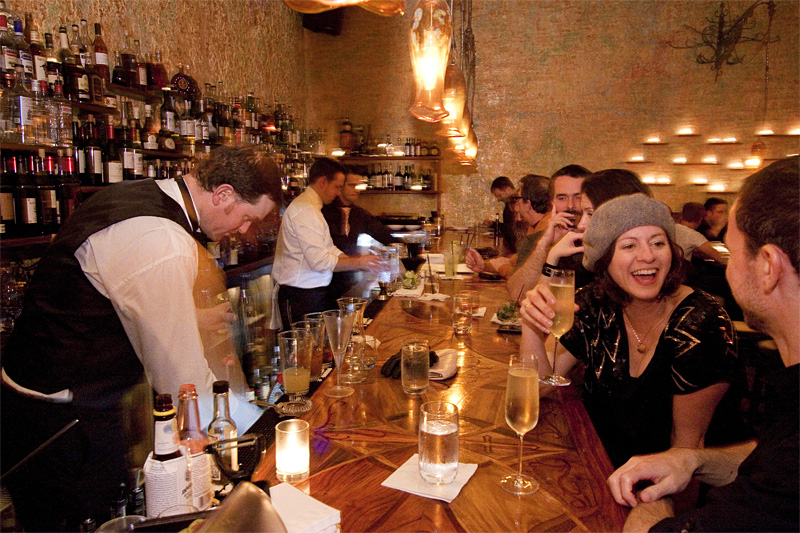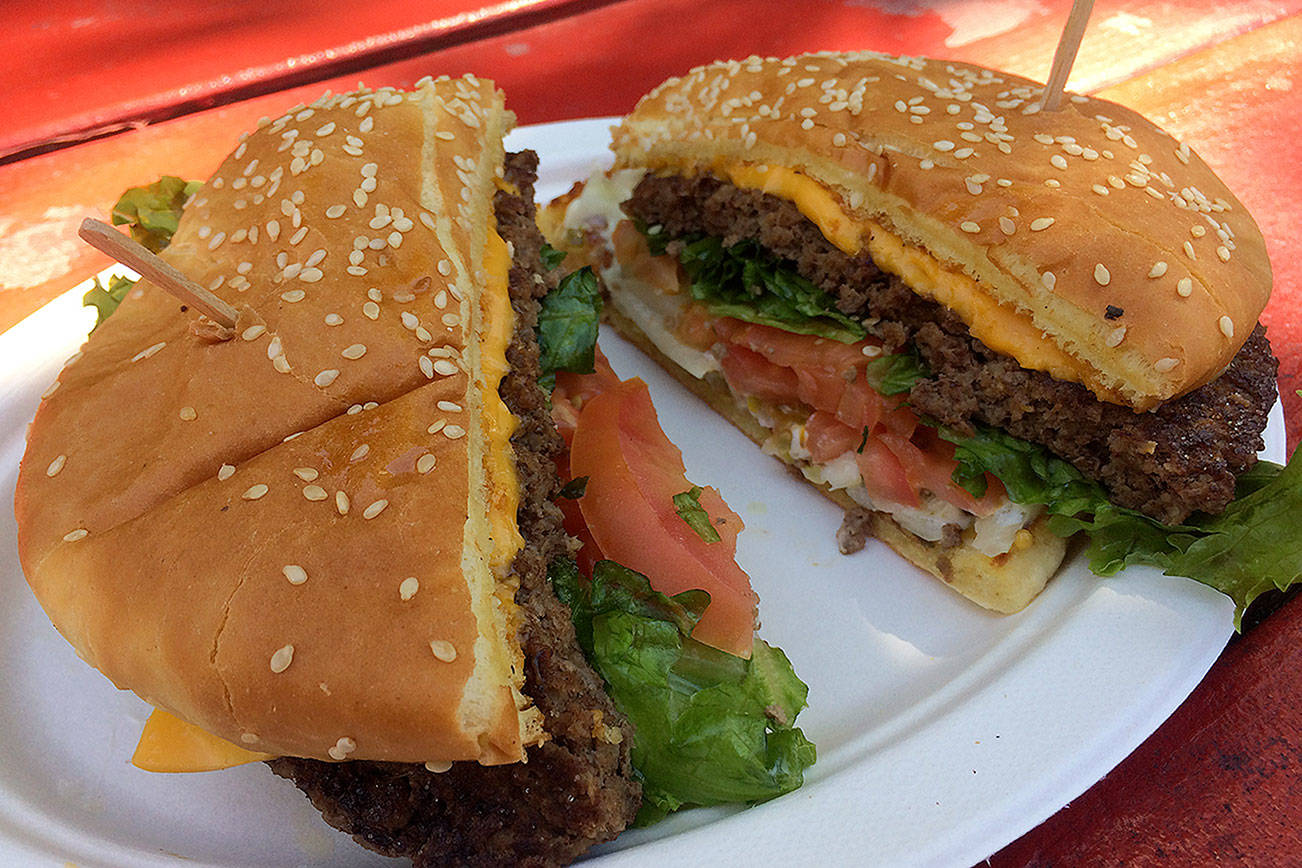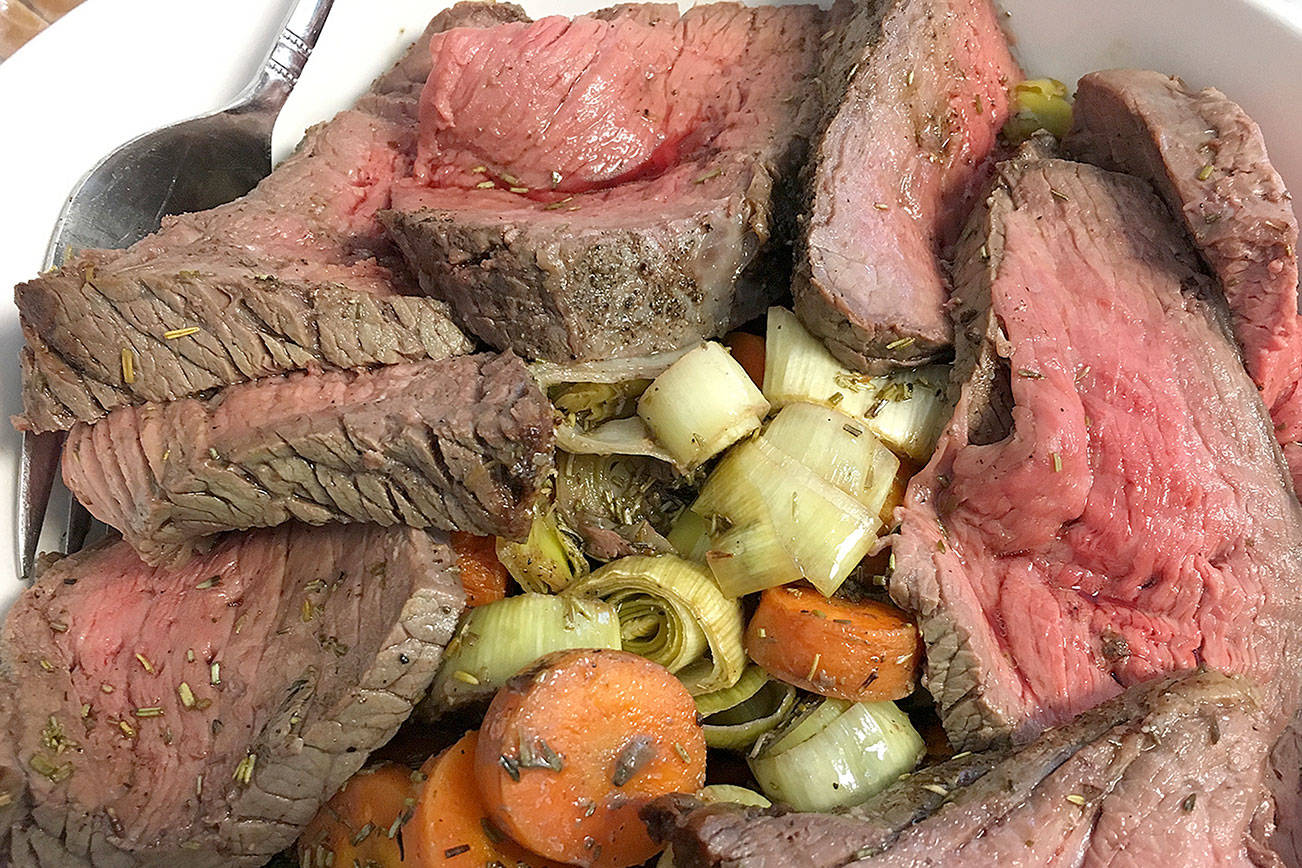Even before Scott and Heather Staples opened Quinn’s Pub on East Pike and 10th Avenue East, the press identified it as Seattle’s first “gastropub,” a term the national food media have been touting for a while now as the next big trend.
If Quinn’s is apparently Seattle’s first, what exactly is a gastropub, other than something that sounds like a colon obstruction? The Jolly Roger Taproom at the Maritime Brewery has been on the creative-food-with-good- beer tip for years, and it’s not considered a gastropub. Beer-focused places like Brouwer’s, the Collins Pub, and Hale’s Ales don’t exactly sell stale tortilla chips with canned nacho cheese sauce. I asked a bunch of Seattle food geeks to define “gastropub” for me, and the only two responses I could evoke were “the Spotted Pig in New York” and “you know, the ones in England.”
After two visits to Quinn’s, I think the term can be summed up in one ingredient: bone marrow.
Blame neoclassic English gastronomy, championed by cooks like Fergus Henderson and food writers like Hugh Fearnley-Whittingstall who are trying to revive England’s love of offal. Scott Staples, Quinn’s chef, doesn’t embrace that particular trend whole hog (sorry), but he does take a perfectly decadent dish like potato gnocchi with blue-cheese cream sauce and braised oxtail meat, then adds a chunk of deep-fried bone marrow to push it over the edge. The dissolve-on-the-tongue gnocchi hold up to the meat and cream sauces. But that square of jiggly, crisply battered marrow on the side tastes kind of wrong—in a foie gras/butter-poached lobster/Krispy Kreme bread pudding kind of way.
When I talked to the chef after my visits, he called his food “unapologetically meat driven.” Staples’ food is rarely too rich to drown out the smarts put into it. In fact, it’s the chef’s finesse that separates his menu from that of the brewpubs. What distinguishes Quinn’s from a bistro like the couple’s first restaurant, Restaurant Zoë, is that the gastropub hits that sweet spot between hangout and full-on restaurant. There’s no distinction between the high and the low ends of the menu. You can order bar snacks like three-for-$5 meatball sliders. You can get a grilled ham and cheese, fish and chips, or a braised lamb shoulder with polenta (one of only a few dishes on the menu to top $12). You can drink one of 12 beers on tap, which range from Belgian ales to PBR, as well as a rotating selection of craft beers by the bottle. (One complaint: I know it’s a pub, but the wine list, which doesn’t list year or region of any of the bottles, needs to be better marked.)
I walked past La Puerta, Quinn’s predecessor, hundreds of times and never thought about entering. (The Mexican restaurant moved, by the way, to the second floor above the Broadway QFC.) Then the Stapleses pulled a Pygmalion, and in just a few months created a design showpiece. They replaced the two-story windows, banishing the decals that had hid the room from the street. They installed clusters of dim bulbs that cling to the ceiling like frog’s eggs to the leaves of water lilies. Despite its gorgeousness, the room feels vaguely like a tavern, thanks to the stairs to the mezzanine—which are paneled with untreated boards—and a bar shaped like one from a 19th-century saloon, only stripped of its vines and turrets. The room gets loud when the bar gets slammed, but hey, it’s a (gastro)pub.
I had two disparate experiences with the service. One waiter made us feel like he was personally escorting us through the meal. He divvied up our amorphous order into apps and entrées, asked about getting me another beer just when I had two sips left, and even relit the candle on our table without my tablemate noticing. On my second night, the waiter treated us like we had brought our pet rats. Among other fine moments, he dropped off every plate we’d ordered in one trip, so by the time we ate our salad and soup, the hanger steak was cold and the fries greasy. We spent so much time trying to catch his attention during the last hour we were there that I left smoldering. Because of my experience with the first waiter, and the ready welcome from the hosts and bartenders—who don’t wait, in typical Seattle fashion, for strangers to make the move before greeting you and launching into chitchat—I felt like he was the anomaly. But it still sucked.
If the service declined between my two visits, the food only grew more assured. For example, on the first night, we were served a plump house-made sausage sprawled across a bowl of lentils mixed with wine-braised kale; it tasted like a Prussian farmer’s winter feast, but the lentils had started breaking down into mush, and everything on the plate seemed to have the same gray-brown color. Good pub food, but not so gastro. The second night, we had lentils again, these vegetarian: Puy lentils with cauliflower that had been tossed in a good Madras curry and roasted, then hit with a dollop of mango salsa and a swirl of yogurt. I almost dismissed the menu description as multiculti hippiedom, but the play between the spicing and the color of the perfectly braised lentils, the tender vegetables, and the bright fruit made me glad I’d had a chance to taste the dish.
With the exception of a pear-endive salad (worth ordering just to get some roughage), Staples veers heavy in his hunt for big flavors. He grills a salad of romaine lettuce, bread cubes, onions, and fennel just long enough to coat the components with some smoke, then tosses the still-crisp greens with a sharp dressing. He slices barely seared tuna—often the starting point for a clean, spalike dish—and lays the slabs across white beans stewed with pancetta, surrounding them with a veal-stock reduction sauce glossy with foie gras fat. (As with the fried bone marrow, this took it 200 calories too far.) And then there’s the scoop of duck rillettes—shredded duck blended with its own fat, which you spread on oiled toast.
I don’t know how often I want to make a full meal of dishes like the tuna, oxtail gnocchi, or rillettes, which seem to be made for ordering solo with beer. For a full night out, Staples offers a few more nuanced dishes like the “clam chowder deconstructed,” a thick cream lake with an island of chowder ingredients (steamed clams, diced potatoes, raw leek rings, a cube of fried pork belly) and a lightly smoked hanger steak with a lively roasted-pepper-and-almond sauce and a few short sharp shocks of a Spanish blue cheese.
I see a lot of similarities between Quinn’s and Cafe Presse, Jim Drohman’s six-month-old restaurant on 12th and Madison that I manufacture all kinds of excuses to drop in on. Both stay open late, both keep prices down, and both have a whatever-goes welcome that accommodates a quick drink or a full meal. Gastropub, whatever—that’s the trend I’m hoping will take off.






